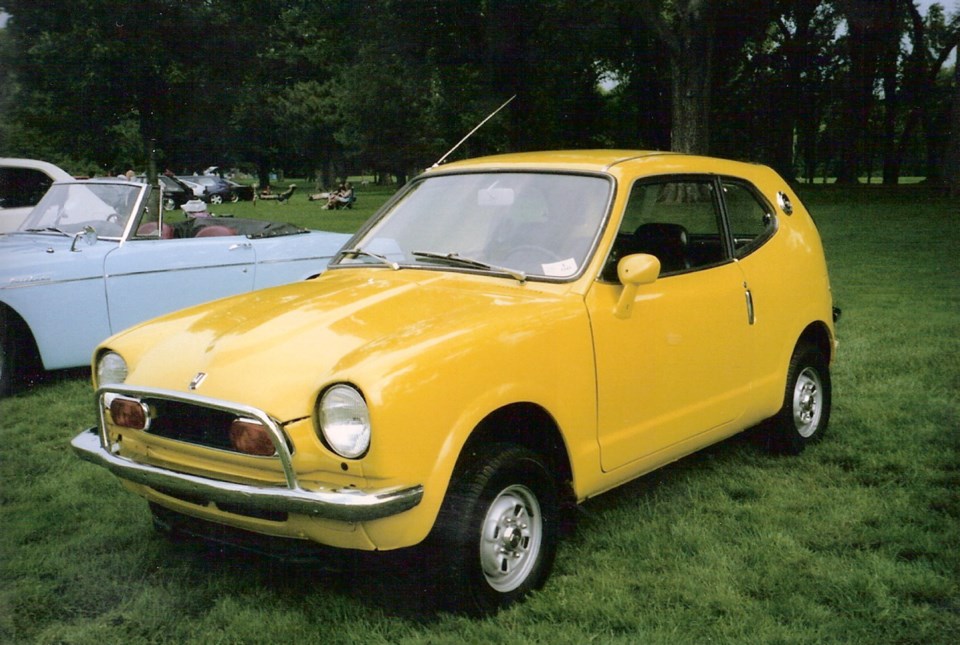By the 1960s, Japan’s Honda Motor Co. was the world’s largest motorcycle manufacturer. Encouraged by this success, it decided to build on its two-wheeled success by entering the automobile market. Its first car in 1962, the tiny S-series roadster, was heavily influenced by motorcycle technology. Production started in 1963.
The little roadster would go through S500, S600 and S800 versions based on engine size. It had good performance for a tiny car, but its diminutive size appealed to a narrow market niche. A few were sent to North America on a trial basis.
To expand its offerings, in 1966, Honda began offering a small front-wheel-drive sedan called the N360/N600, powered by two-cylinder, air-cooled engines. Other models followed, and by 1968, Honda’s annual automobile production exceeded 185,000.
Honda exported some cars, but not initially to North America. When it did begin, it was the N600, marketed simply as the 600, with a few cars landed in California in 1969. The small, basic 600 appeared influenced by the British Austin/Morris Mini.
The 600 and Mini were about the same size, with the 600’s 1,999-millimetre wheelbase being just 33 mm shorter than the Mini’s 2,032 mm. The 600’s 3,119-mm overall length was a mere 127 mm greater than the Mini’s, but in spite of their diminutive sizes, these two-door sedans could carry four (friendly) passengers.
Both had transverse engines driving the front wheels, although there were significant differences in approach. The Mini was powered by an 848-cc overhead-valve, water-cooled inline four. This contrasted with the 600’s 598 cc overhead-cam, air-cooled, inline twin.
The Mini’s four produced 37 horsepower, while the 600’s twin had 32. An interesting technical difference was the Honda’s built-up roller bearing crankshaft compared with the Mini’s conventional plain bearings. Both had four-speed manual transmissions in the engine sump.
A Mini advantage was that its smooth-running four-cylinder engine made it seem more like a “real” car. The 600’s twin, on the other hand, was noisy and plagued by vibration. And although the top speed was about the same at 117-121 km/h, it required the Honda’s engine to spin at 5,850 rpm, while the Mini’s turned almost 1,000 rpm slower at 5,000. Neither would be called a leisurely ride.
The 600 sedan was a utilitarian little vehicle, so Honda soon introduced the sportier 600 Coupe with two minimal passenger seats in the back. It was kind of a semi-hatch with the small trunk accessed through a top-hinged rear window.
Mechanical specifications were similar to the 600 sedan, with a transverse two cylinder driving the front wheels through a four-speed manual transmission. Suspension was MacPherson struts in front, and beam axle and leaf springs at the rear.
Although adequate, and generally standard fare on contemporary small cars, the 600’s suspension was not as sophisticated as the Mini’s “Hydrolastic” rubber-and-fluid suspension that was inter-connected front to rear for a more level ride.
Acceleration of the Coupe was a modest zero to 97 km/h in 23.6 seconds, according to Road & Track. Top speed of 126 km/h was adequate for this class, but few would care to endure the cacophony of the high-revving engine for long.
The Honda Coupe was best suited to commuting by one or two persons. It was tiny, easy to park and gave fuel economy in the 5 to 7 L/100 km range. It was an ideal second car, providing cheap around-town driving with enough room by folding the rear seat to carry a week’s groceries. Its attractions were low initial price and good fuel economy.
But the 600’s pram-like appearance and small size limited its appeal. This and the cost of meeting tightening emission standards caused Honda to withdraw it from the North American market in 1972.
The 600 was replaced by the Honda Civic, introduced here in 1973. The Civic was not an evolution of the 600, but an all-new car that launched Honda onto the international automobile market.
Although still small, the Civic was 376 mm longer than the 600, making it more suitable for general use. Its 1.2-litre aluminum, transversely mounted overhead-cam four-cylinder drove the front wheels through a four-speed manual transmission, or optional two-speed automatic.
The Civic’s performance was a more than adequate zero to 97 km/h in 14.1 seconds, and top speed of 147 km/h. It could be called a better, more refined Mini.
The Honda 600 sedan and Coupe were Honda’s first real foray into North America. They soon indicated that market success there required a bigger, faster car.



